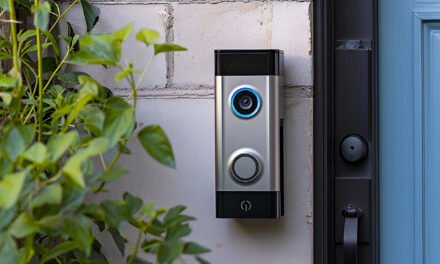Green living is something we all know something about. These days you would actually have to live under a rock to not know about the growing changes impacting our environment. Simply turn on your TV or open a news feed and you will see stories about the impact of global warming and myriad of other news about the decreasing stability of the environment. Depending on where you live, none of the information you read impact you or your daily life. And as sad as it may be, many ordinary people don’t understand the importance of contributing to the environment, even in the least possible way, like separating glass, cans and paper every day.
For many, living green is not a priority and not something they think about every day.
Whether they realize it though, ongoing changes with the environment is affecting everyday life. One perfect example of that impact happens when visiting a supermarket and realize they can no longer get a plastic bag to pack groceries. In fact, since COVID-19, you actually need to bring your own bag to the grocery store. If you don’t bring your bags, you are being charged to use the grocery store paper bags.
Here is a reality. A large percentage of your neighborhoods, friends, acquaintances, don’t think about the dwindling environment and its impact. They are just busy living their everyday life, and a recycling strategy is the last thing on their minds. As common as environmental factors are and its impact on everyone’s life, it’s just not imbedded in our community enough yet that things like recycling would happen without a second thought. A part of the reason it’s not common and effortless have a lot to do with making a change that may affect their pocketbook and it’s hard enough these days to pay your bills, much less to buy products that’s environmentally friendly.
Green living for you too
If we are going to make green living something we all do every day and in every way, we must find a way for ordinary people to embrace and incorporate a sustainable lifestyle. Whatever that method of integration may be, it has to be realistic, simple and second-nature. I came across a website that recommends wearing extra layers of clothes to conserve heat as a way of being sustainable. Really! You will not find a large percentage of people living in seasonal climate, doubling and triple layering their clothes, because it’s sustainable. They will do that if the heat in their home isn’t working, but for the environment? Unlikely.
A pragmatic strategy is important, especially if we expect to increase sustainable efforts and make it commonplace. This post is the first in our Envo category on Fullrliving. This category, and future post will focus on realistic, ordinary ways to live sustainably. We want to show our readers how they too can contribute effortlessly to the environment.
What can ordinary people do every day to preserve the environment? It would start by understanding that there are facets of our lives that we can make slight changes that would affect the environment. For instance, how to go paperless, and why going paperless would affect our climate. Let’s start here. Let’s start with sharing information about going paperless and how it would impact the environment.
Living green by going paperless
A choice to go paperless or to reduce the use of physical paper can help to reduce CO2(carbon dioxide) emission. Let’s define what carbon dioxide is: It is a gas comprising two parts oxygen and one part carbon. Plants uses it to produce carbohydrates in a process called photosynthesis. It is one of the most important gases on earth because of its use to create plants humans and animal use for food. You can read more about CO2 and photosynthesis here.
You can have an enormous impact on the environment just by going paperless. A paperless choice would be beneficial for business and individuals alike. For business, it would mean saving millions by incorporating paperless productivity and by using tools such as OCR(Optical character recognition) software to eliminate paper and data use. But for individuals, people like you and me, it may not put millions into our pocket, but there are benefits besides saving our plant life. Here are a few ordinary identifiable benefits:
Ink
It’s the most obvious cost saving benefit. Consider the times you needed to replace the ink in your printer. How many times have you said to yourself, “I just replace that!”
Being organized
How many years of your income tax do you have sitting in a box, in a corner of your home? These days, you don’t even have to print it. Save it to a PDF file it on your PC, Mac, or better yet the cloud, and that’s it!. Saved a few trees in the process too.
Space
With organization, comes more space. Say goodbye to the boxes, the file cabinet, or whatever storage system you used to accumulate “Stuff.”
Save on your bills
Whether it’s your phone, credit card, or utility bills, most companies offer a credit if you choose to go paperless and receive your bill via e-mail.
Paperless receipts
It’s another option that’s becoming more and more common. If you frequent any store that doesn’t offer the option of getting your receipt by e-mail, then you can contribute to the environment by asking that store to offer that option in the future. It’s no longer unconventional to expect such services.
Since emails have become the standard for communicating, companies find that it’s cost saving to go paperless. It’s a benefit to them, to you, and the environment if you make a conscious choice to be a part of the change.
The reality and equipment for going paperless
If you know anything about going paperless, you know that there would be some investment. While the benefits outweigh the cost, mentioning what investment involved is relevant. While email accounts are free and your cell phone and utility company, don’t charge you a thing to send your bills to your e-mail, if you decide to get rid of your growing document pileup, and create a paperless strategy, it would require some thought and a small investment. Here are the basic tools you would need.
Scanner
You may think this would be an enormous investment and you are right. Just a few years ago, you would need to invest a few hundred dollars in a good scanner. Today, however, companies such as Evernote offers applications such as Scannable. With this app, you can scan using your smart phone and save directly to your computer or on the cloud.
Cloud Storage
Yes, you can save your documents directly to your computer, but you need to secure what you scan. You don’t want something to happen to your hard drive and lose all your documents. To prevent that scenario, consider getting a cloud subscription. While cloud storage like Dropbox can cost a hundred plus dollars a year, you can also consider using an app such as Evernote. For less than ten dollars a month, you can have an excellent way to scan in and organize your documents and sync them to your computer, phone, or tablet. This means access whenever you want it, and you don’t have to go home and rifle through a file cabinet.
A final reason why green living & paperless matters
According to the EPA, the paper industry is the second largest energy consumer in the county. Paper usage contributes to the pollution release in the environment, deforestation and so much more. The environmental ramification of paper usage is astounding and if you can contribute to lowering the consequence effortlessly, then you should. If you love the environment and worry about our planet, taking small ordinary steps is a great way to contribute to saving our planet.








